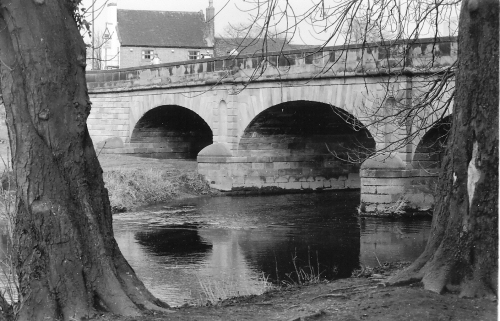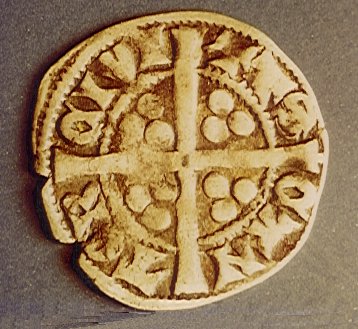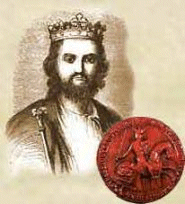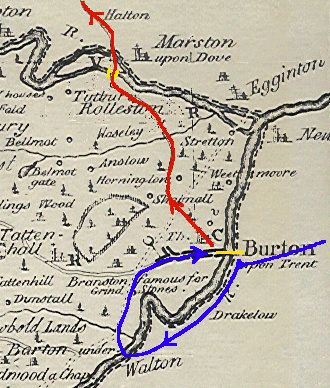The Silver Coins
This is the story of the hoarde of coins that were found in the River Dove
In 1831, workmen were improving the outfall of the nearby cotton mill. This involved the construction of an embankment to separate the outflow from the main river, using gravel from the river bed.
The workmen found a few silver coins in the gravel some 60 yards below the bridge, which were quietly dispersed amongst themselves. Throughout the week coins continued to be found in ever increasing numbers. The further upstream they worked, the greater were their discoveries. The next week, several thousand were obtained and they located a cubic yard of coins about 30 yds below the bridge. Five feet down 5,000 coins were found by two men in one day.

Very soon, hundreds of people were in pursuit of coins. often immersed to their waists with shovels. It is estimated that 100,000 coins were recovered, although some 360,000 were originally in the casks. The "Derby Mercury" reported workers were collecting sufficient coins to earn £10 a day.
Naturally news spread rapidly, as well as excessive drinking, quarrels
and disturbances. At length the Duchy of Lancaster issued an order to prohibit
further searching. After further digging on behalf of the Duchy, the excavations
were in-filled by order of William IV. This order remains in force and can
be seen exhibited in Tutbury Church.


How they got there
 Thomas,
Earl of Lancaster sided with the Scots against his cousin King Edward ll
in the early 1300s.
Thomas,
Earl of Lancaster sided with the Scots against his cousin King Edward ll
in the early 1300s.
King Edward decided to attack Tutbury Castle to teach him a lesson and mounted an army from London.
Thomas heard about this and returned to Tutbury with his own army of 30,000 men.
Thomas fortified Burton Bridge, the only crossing over the Trent for miles, and held the bridge against the King’s advance party.
The King received advice that there was a little known ford at Walton so he crossed the river there (leaving a decoy force at the bridge) and attacked Thomas from the direction of Branston.

Thomas was thrashed at the Battle of Burton Bridge on 10 March 1322 and retreated to Tutbury Castle, leaving Burton in flames.
Thomas was expecting reinforcements from his Scots allies but they didn’t turn up so he was forced to escape over the Dove. The King's victory was short lived as he was eventually overthrown and murdered.
The treasure was thought to have been the be payment from the Earl to his troops and Scottish allies, possibly to be taken to the Priory for safe keeping. Many witnesses confessed to seeing the casks but a wall of silence ensued.
There are several stories of how the coins were lost:
- Thomas’s treasurer lost the treasure chest whilst crossing the flooded Dove.
- Monks hid the treasure for their own procurement or safe keeping until the King returned.
- Looters of the castle found 3 barrels containing £1500 and hid them in the bank of the river. This would have been worth £60,000 in 1950 and £¼ million today!
The coins lay there for 500 years, the barrels breaking up until 1831 when the workmen found them. What is certain is that many coins remain in the river. A few coins can be seen in the Stoke on Trent City Museum in Hanley.
The final count included gold and silver coins of Henry lll, Edward l, Edward ll, Scottish coins of Alexander lll, John Balliol and Robert the Bruce, plus Kings of Bohemia and Poland.
The Crown asked for them back!!!

